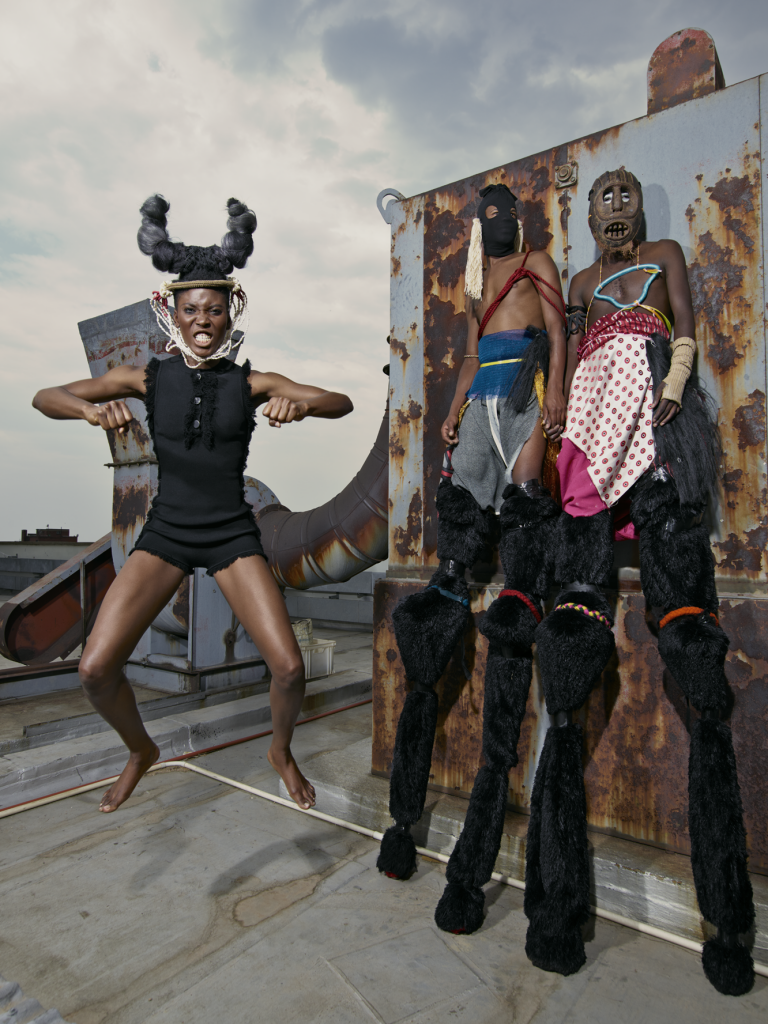Namsa LeubaFixed Gaze Through a Western Lens

Swiss-Guinean artist Namsa Leuba creates carefully arranged photographs that explore the rituals and symbols of her dual heritage. As a child, she was exposed to the supernatural side of Guinea and attended sacred events and rituals. Raised in Switzerland and educated in western schools, Lueba studied the ceremonial acts and animism of her mother’s native country Guinea, where she worked with the local inhabitants in a village in Conakry. She also spent many months in South Africa living and working with the native population of Lesotho in the mountain region of Katze Dam, and with the Khoisan tribe in the Northern Cape.
Leuba utilizes the photographic image to dissect cultural paradigms and deliberately recasts them through staged interventions of a performance. The series Khoi San (2014) focuses on the customs of the Khoisan people, who are hunter-gathers located in t he semi-desert landscape and diverse bodies of water in southern Africa. Over 22,000 years ago, they were the largest population of humans in the world and one of the most genetically diverse. However, over the last few centuries the Khoisan have suffered significant decline because of European colonization and attacks by fellow Africans. Using hyper-stylized, dramatic clothing and accessories, Leuba photographed Khoisan people absorbed by the harmful effects that Western hegemony imposed on their identity. Nonetheless, they remain vigilant and steadfast furnishing bow and arrow, fury armour and crochet horns.
Leuba’s photographic practice also involves fashion performance. The Tonköma series (2014), which means ‘people stand up’, was created for Ali Hewson and Bono, the founders of Edun Fashion. (Edun is nude spelled backwards.) Edun Fashion focuses on sourcing and making all of their clothing and accessories in Africa. Leuba stages a theatrical performance with professional fashion models as well as impersonators on stilts that resemble the lower body of a mythical dark horse. The masquerading subjects wear West African masks and skullcaps, exaggerated artificial hair and traditional adornment mixed with Edun clothes and textiles. These performers are based on the Nyamou, Guinea, who practice animism and are said to be benevolent protectors in the Holy Woods; they keep the malicious forces away.
In The Kingdom of Mountain (2014), Leuba’s arranged environments are elaborate and vibrant. Working with native people, Leuba positions them against dreamlike backgrounds and embellishes their bodies with colourful clothing, props and materials that simultaneously reveal changing identities and confront stereotypes and rigid beliefs. The subjects’ fixed gazes are impenetrable while Westernization engulfs their African culture. It is in this way that Leuba navigates the two aspects of her ancestry. She reshapes African traditional objects and animist symbols thus separating the native people from the spiritual realm. This is considered to be impious and is shunned by many practising animists. However, Leuba sees this as reinterpreting ceremonial artefacts; a way of acknowledging and capturing her own prejudices through photography.
